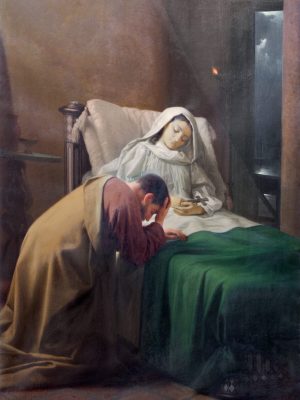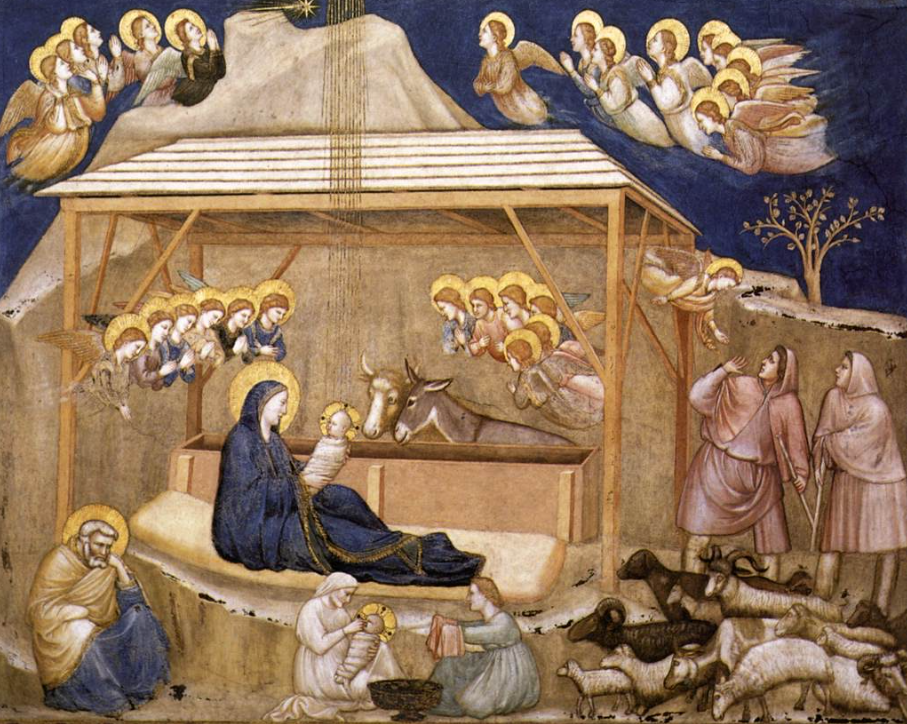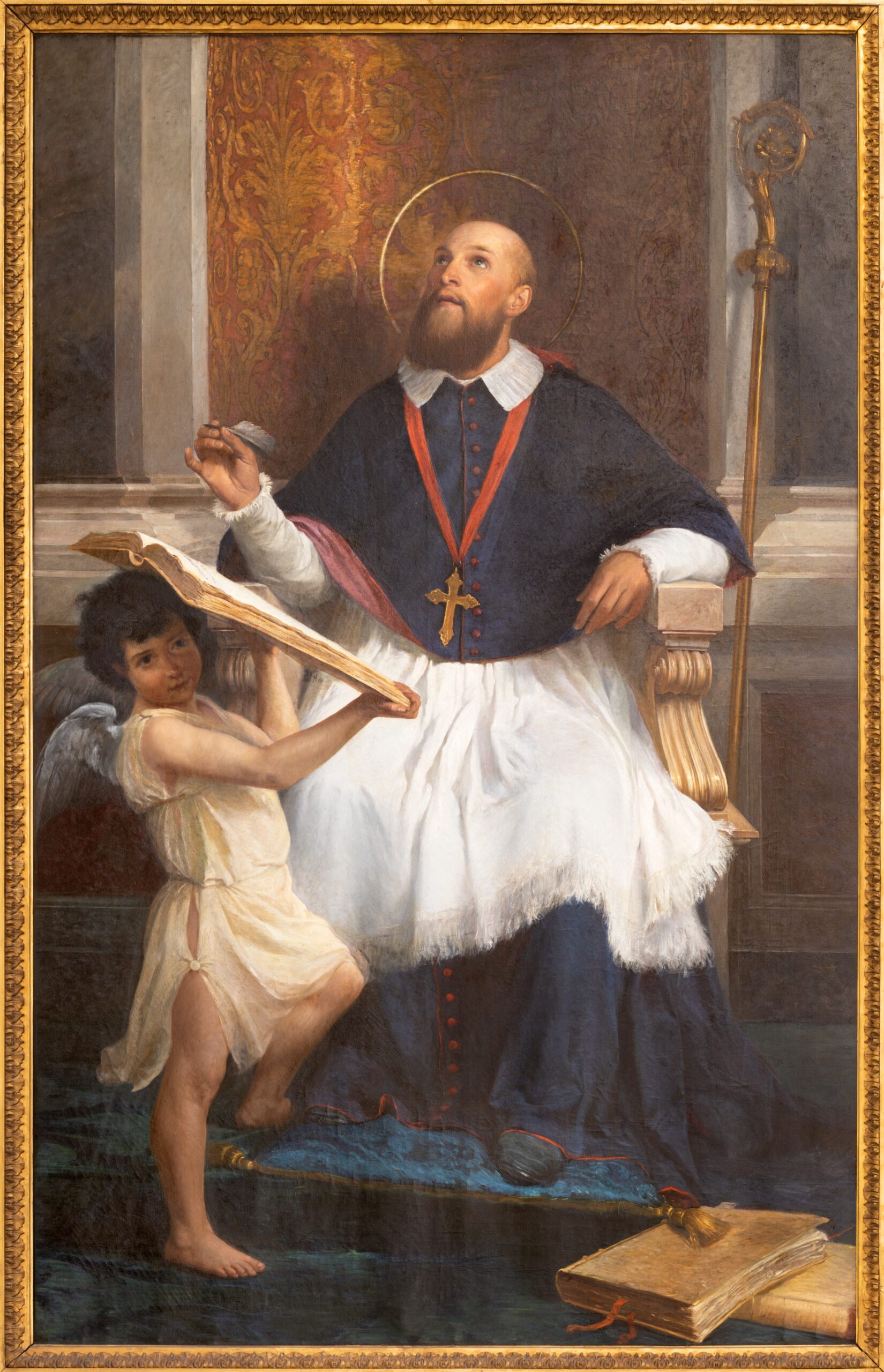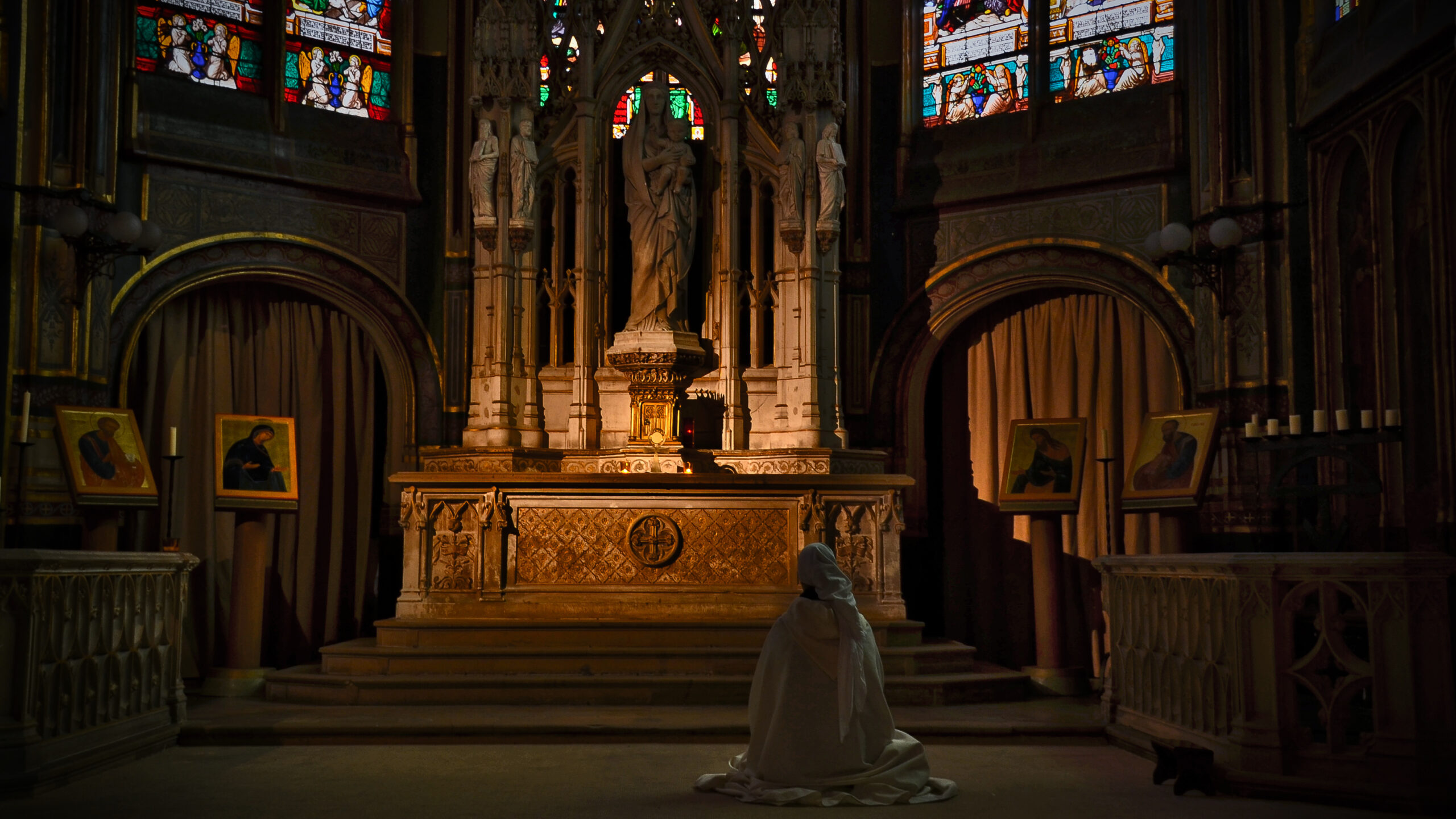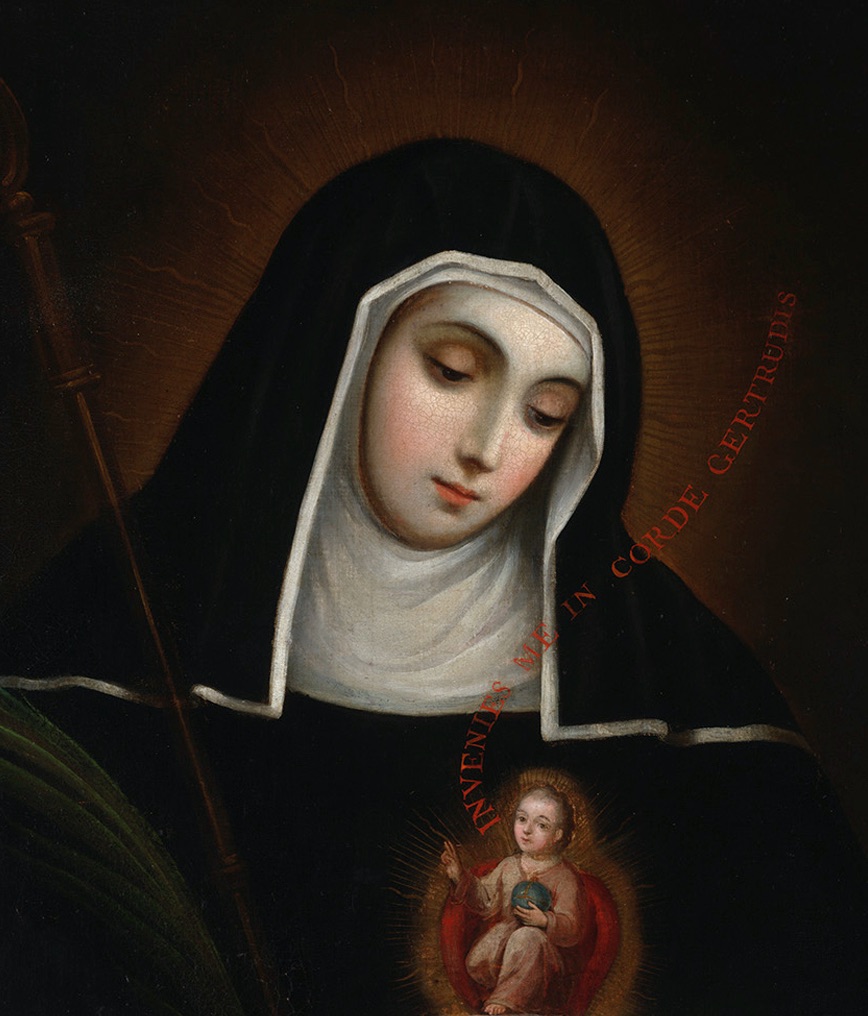There is perhaps no more counterintuitive notion for a parent than this: you must prepare your child for death.[1]
From the moment you learned of the child in the womb, you have directed all your God-given instincts, your energy, and passion into keeping that child alive. You would move mountains to keep your son healthy; you would suffer any pain to free your daughter from her own. You have reared the little ones for a happy and long life and perhaps prayed the parent’s prayer: Dearest Lord, please allow my child to outlive me. Yes, you have been preparing your child for living!
The modern world treats death as a thing of horror. And in a sense, it is. “Now why is death so hard, so terrible a thing? It is because the soul has to separate itself from the body. Body and soul were created for each other, and so intimate is their union that a parting between them seems almost impossible. They would endure almost anything rather than be torn asunder.”[2] This is a natural response, so natural that Our Lord experienced inconceivable agony at the hour of His death. No, not just because of the nails piercing His hands and feet, but due to the horror of the separation of body and soul.
We know from the testimony of our Redeemer Himself that no agony is like the agony of death. Although through the whole course of His sorrowful passion, He was tortured in a terrible manner, yet all the martyrdom He endured was not to be compared with what He suffered at the moment of His death. This we gather from the Gospels. Nowhere do we find that at any period of His life the greatness of the pains He bore extorted from Our Lord a cry of anguish. But when the moment came for Him to expire, and the ruthless hand of death rent His Heart asunder, we read that He cried out with a loud voice, and gave up his ghost.[3]
Thus, even the most faithful of our children will likely have a horror of death, and rightly so. After all, death is a horrible thing in itself, the last enemy to be destroyed (1 Cor 15:26). It is the punishment of Adam’s rebellion against God: “And he commanded him, saying: ‘Of every tree of paradise thou shalt eat: But of the tree of knowledge of good and evil, thou shalt not eat. For in what day soever thou shalt eat of it, thou shalt die the death” (Gn 2:16–17).
The secular world, however, adds an additional fear to death: an unhealthy fear, a godless fear. To the unfaithful, death is seen as the end rather than the beginning; death is seen as failure rather than completion; death is to be raged against with every fiber of your living body. As the Welsh poet Dylan Thomas so aptly put, “Do not go gentle into that good night. Rage, rage against the dying of the light.”[4] And this is exactly what the modern man does, for he does not believe that God waits for him on the other side. Imagine: this lack of faith added to the natural horror of separation of body and soul!
Saint Peter waged a similar protest to Christ’s own passion and death. As parents, we must hear Our Lord’s reprimand: “Go behind me, Satan, thou art a scandal unto me: because thou savourest not the things that are of God, but the things that are of men” (Mt 16:23).
The eyes of faith—the eyes of a truly loving parent-—see death as the glorious gateway to eternal life. Truly, the horror will present itself. But that does not mean it must be met without hope.
Despite its complete contrariness to modern sentiments, another stark reality of death is this: the demonic will assault your child upon his death more so than they ever did during life. Saint Gregory the Great says, “Consider well how terrible is the hour of death, and how appalling the remembers of evil deeds will be at that time. For the spirits of darkness will recall all the harm they have done us, and remind us of the sins which we have committed at their instigation. They will not go to the death-bed of the godless only, but they will be present with the elect, striving to discover something sinful whereof they accuse them.”[5]
There is, however, an antidote to this terror: reliance on the Blessed Mother at the hour of our death. We will address her later, but for now, note this: the Hail Mary says, “Pray for us now and at the hour of our death.”
Dear Parent, do the following math: if your child is ten years of age and were to pray the Holy Rosary every day until death at age eighty, how many times would he have implored for the Blessed Virgin’s intercession at the moment of death? There are 53 Hail Marys in every Rosary. If they prayed 53 Hail Marys every year 365 times, that is 19,345. Multiply that by seventy years. That is 1,354,150 times! What better way can you prepare your child for a holy death than by praying the Rosary daily? If your little one implores the Mother of God over one million times to be present with him at the hour of death, do you think she will ignore him? And those demons—all the forces of hell—have no power over the Blessed Virgin. God told Satan in the Garden of Eden, “I will put enmities between thee and the woman, and thy seed and her seed: she shall crush thy head, and thou shalt lie in wait for her heel” (Gn 3:15). With Mary’s help, the demons stalking your child at his death will be met by Mary’s heel. Please take this to heart, and never go another night without praying the Rosary with your little one.
In the truest light of reality, you must help your child see that death is God’s way to bring us to our eternal home. While we should not be fatalistic or dwell too heavily on the subject with little ones, we should also never hide this ultimate reality from them. It requires clear and clever thinking on the part of parents to communicate the truths of the Faith, including the inevitability of death.
Countless opportunities present themselves to cover such a topic with a child. Death is all around, even for a youngster. The flowers will wilt; the leaves will fall; pets will perish; grandparents will pass—perhaps quickly, perhaps slowly. A child must see that death is part of life and that we were not made for this world.
Dear Parent, teach your child that St. Joseph is the patron saint of a happy death, for he died in the arms of Jesus Christ and the Blessed Mother. Your child will die as they have lived. And you have the unique ability to instill in his little soul a desire for a happy death in those sacred arms that held good St. Joseph. Zealously prepare your child for a happy death by first living a holy life.
The greatest gift you can give your child is not that which you provide during your life but what you provide them long after you are gone. Your voice can sound in their mind, many years from now, as they lay dying: “Reach out for the Blessed Mother and Jesus Christ. They will take you to God the Father.”
Source: Parenting for Eternity by Conor Gallagher, Published by TAN Books (cf. Chapter I: The Four Lat things, Death).

[1] See Alphonsus Liguori, Preparation for Death (Charlotte: TAN Books, 1982).
[2] Martin von Cochem, The Four Last Things, p. 2.
[3] Ibid., p. 3.
[4] The first and last stanza are a good summary of the poem:
Do not go gentle into that good night,
Old age should burn and rave at close of day;
Rage, rage against the dying of the light.
. . .
And you, my father, there on the sad height,
Curse, bless, me now with your fierce tears, I pray.
Do not go gentle into that good night.
Rage, rage against the dying of the light.
[5] Martin von Cochem, The Four Last Things, p. 8, emphasis added.


